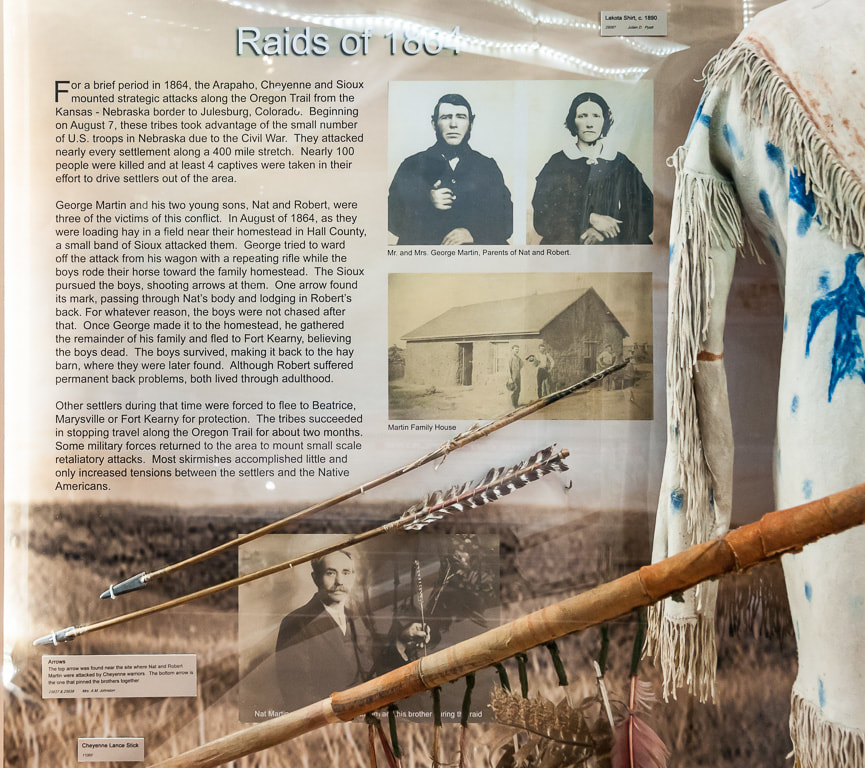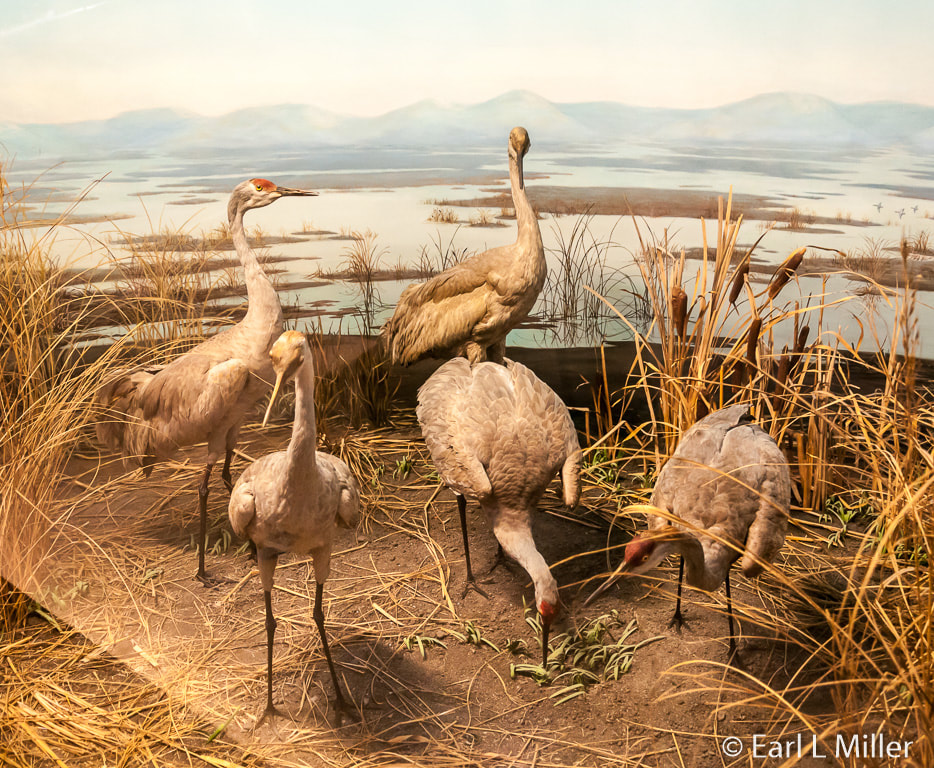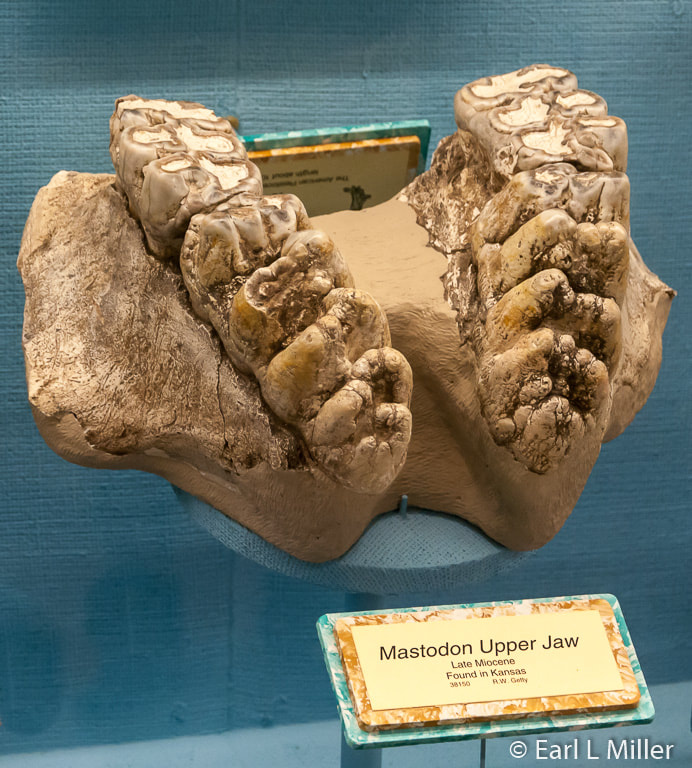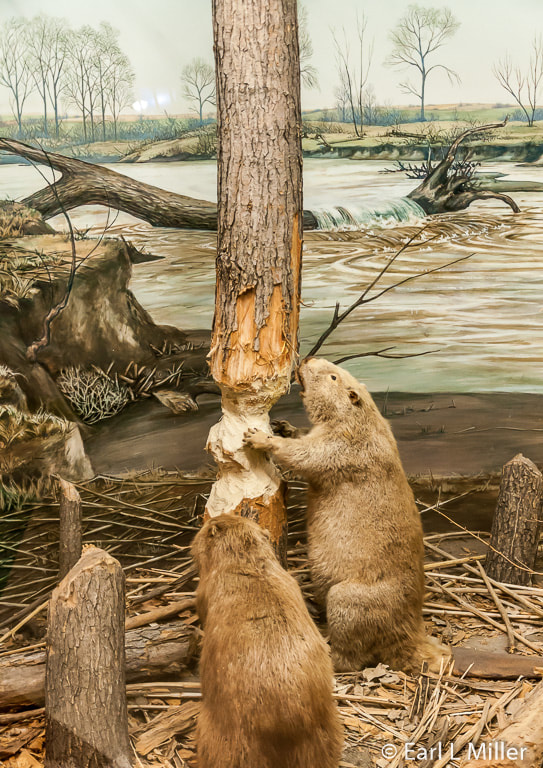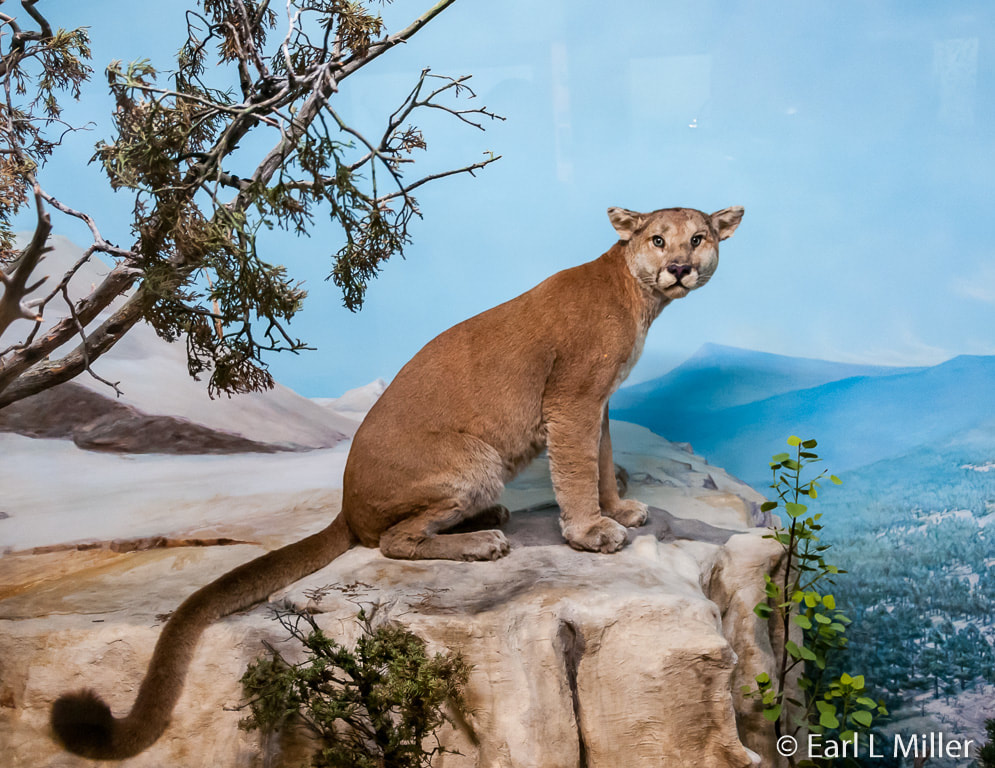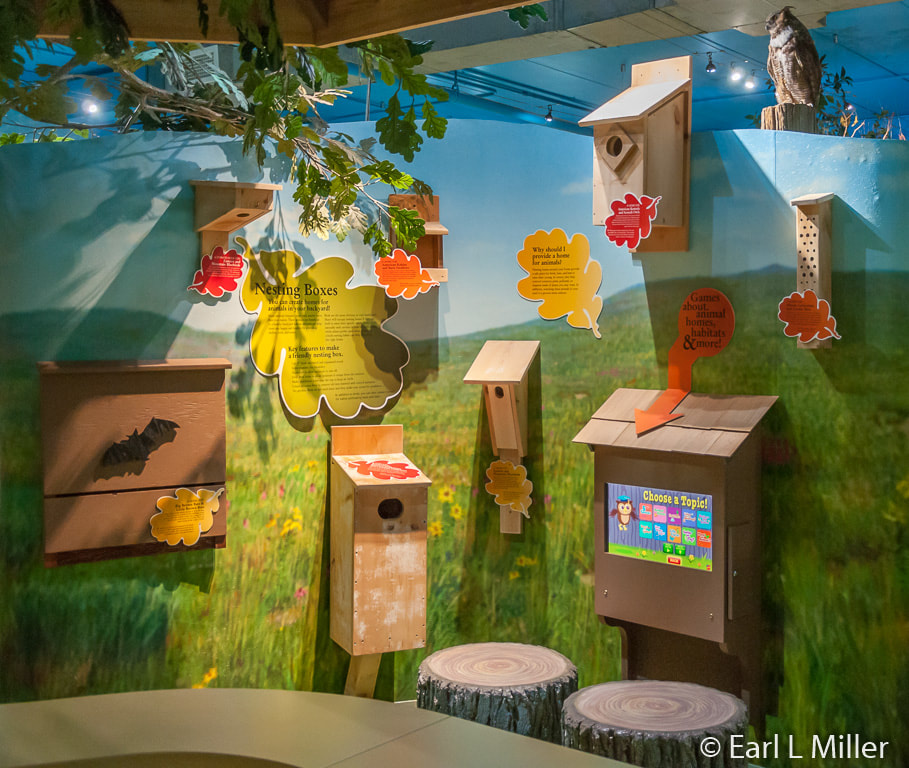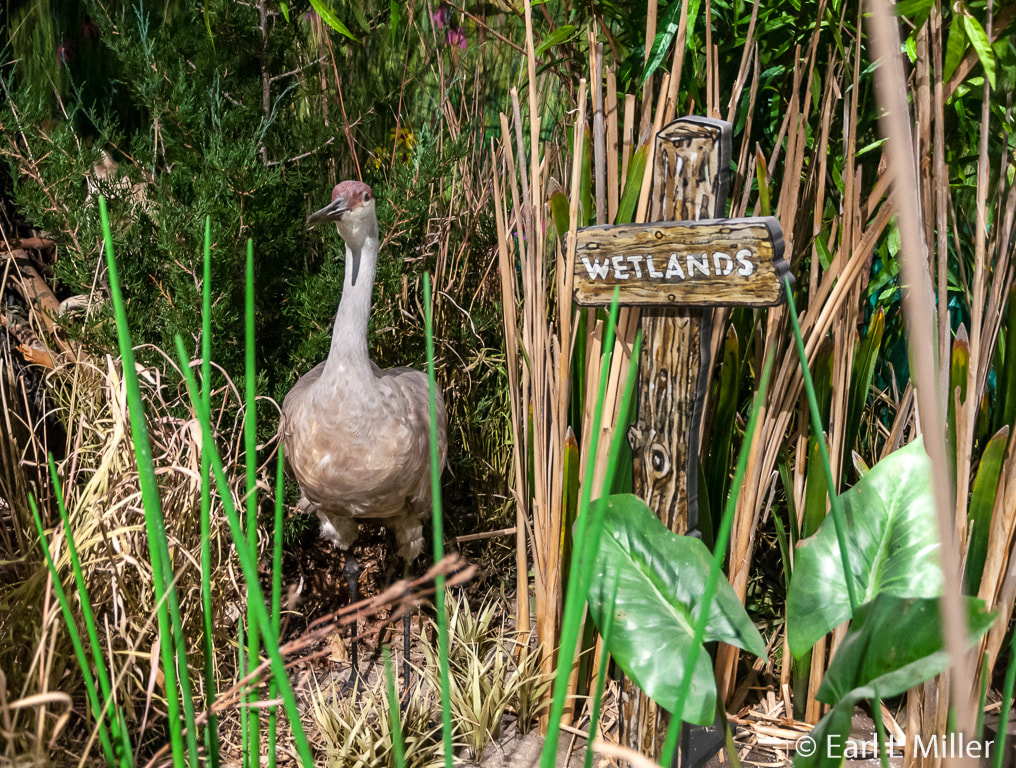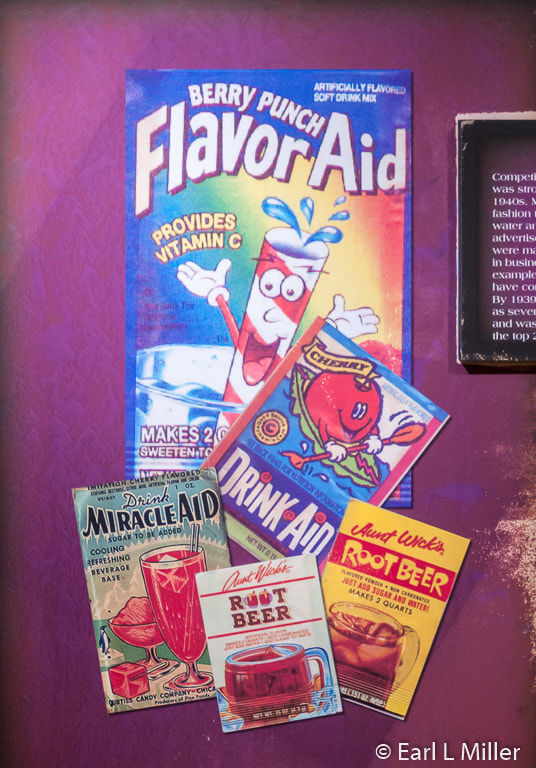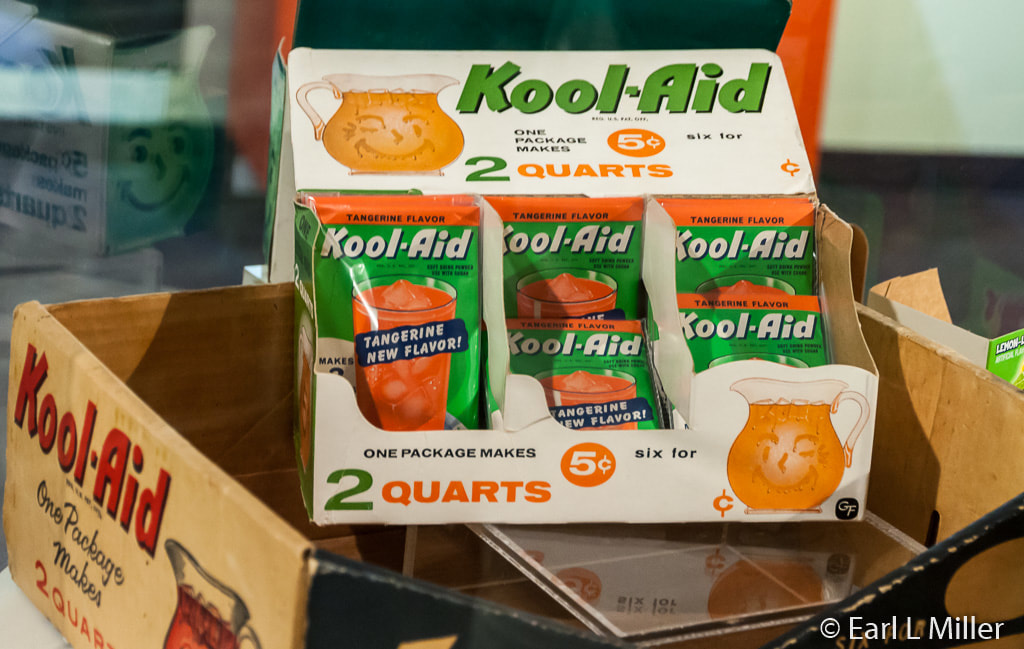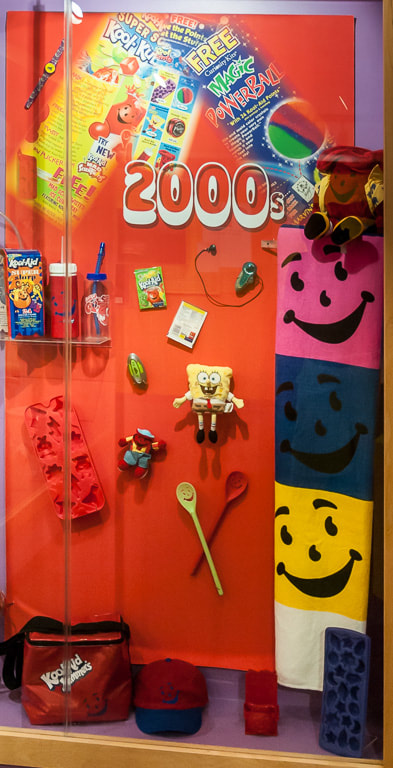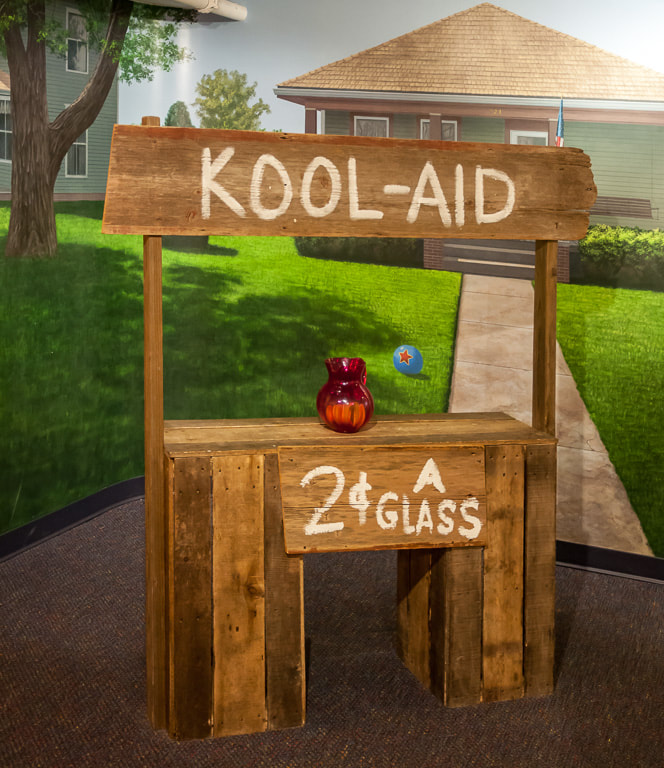Hello Everyone,
Have you ever wondered when or how Kool-Aid was invented? A trip to the Hastings Museum in Hastings, Nebraska provides a complete history of this famous drink in a display space filling half of its lower level. However, that’s only a tiny portion of what you’ll see since this is the largest municipal museum between Chicago and Denver.
After exploring this museum, you might want to check out Nebraska’s number one industry - agriculture. At Grand Island’s Raising Nebraska, visitors find answers to subjects ranging from soils and breeding livestock to raising crops and getting food to market.
HASTINGS MUSEUM
Albert Brooking founded the Hastings Museum in 1927 for his collections of birds, Native American artifacts, and fossils. Visitors find it today in a 1939 building funded by the WPA (Works Progress Association). In addition to a wealth of exhibits on three floors, it contains a theater with a 65-foot screen and a domed planetarium. It’s run by the city of Hastings and accredited by the American Alliance of Museums.
Be sure to ask admissions about their audio tour. At different places throughout the museum, by using your smart phone, you can obtain additional information, photos, and resources not found on labels. Stops are on all three floors as well as outside on the museum grounds. It’s not necessary to do them in order or all of them.
UPPER FLOOR
“People on the Plains” traces history from prehistoric times to pioneer town builders via dioramas and artifacts. In addition to an 1830 Pawnee earth lodge, visitors notice a Native American teepee furnished with hides and Indian artifacts. These are alongside an l857 furnished log cabin, a replica sod house, and a portion of the first wood-framed Hastings house.
Pawnee clay pots, which date back 500 to 600 years, and a covered wagon are displayed. A highlight is the 26-inch high Hildreth, Nebraska wire fence turned into a single twisted piece by a tornado.
Visitors find in “Lock, Stock, and Barrel” more than 500 firearms ranging from the Civil War to Vietnam. It begins with bows and arrows, a matchlock gun from the 1780's, and flintlock and percussion cap weapons. Modern weapons used in World War I, World War II, and Vietnam include a Gatling gun, AK-47, and M16.
Besides numerous rifles and pistols, visitors find bayonets and knives. Look for the ballpoint pen, walking cane, and jackknife which are actually guns. Some exhibits are Women and Guns, Guns as Art, and Sporting Guns.
One highlight is the Martin Brothers story. George Martin and his two sons, Nat age 15 and Bob age 12, were loading hay onto a wagon near their homestead when attacked by Sioux in August 1864. While George attempted to ward off the attackers from the wagon with his repeating rifle, the boys jumped onto a horse and fled. Bob rode behind Nat. They were hit by an arrow which came through Nat’s thigh and lodged in his brother’s back pinning the boys together. They tumbled from their horse. Thinking the boys were nearly dead, the Indians rode away. Bob survived to middle age but always had a bad back. Nat died as an old man. The museum houses the arrow that tied them together.
You’ll also learn about George Maxwell, Hasting’s one-armed sharpshooter. He was known to have shot with Annie Oakley and her partner, Frank Butler. He was one of the fastest sharpshooters ever known, and his gun is on display.
During the Civil War, an infantry regiment, known for their marksmanship, was issued Sharpe’s rifles. They were called Sharpe’s Shooters. The “e” was dropped, but the term sharpshooter became a part of our vocabulary defining good marksmanship. Such a rifle is on display.
The Naval Ammunition Depot exhibit relates its impact on the city of Hastings. Built in 1942, the NAD produced 40% of the Navy’s ammunition needs in 1944. It was one of four major depots in the United States. The government decommissioned the NAD in 1958 and closed it in 1966. Its story is told with artifacts and personal histories.
The bird exhibit, totaling more than 500 mounted specimens, is touted as the largest collection of birds on display in Nebraska. All are birds that either live in the state year round or that migrate through. Some non-Nebraska birds such as herons, the extinct heath hen, tufted puffins, zone-tailed hawk, and the brown booby are also shown. Not to be missed are several passenger pigeons whose species is now extinct.
A favorite is the display of Sandhill and whooping cranes. The whooping cranes diorama is the largest of its kind in the world. Kearney, Nebraska has become known as the place to view 600,000 to 800,000 Sandhill cranes on their annual migration each spring.
The exhibit “Insects and Reptiles” includes butterflies and the African Goliath beetle recognized as the world’s heaviest insect. Visitors also discover snakes and turtles.
In "Rocks, Minerals, and Fossils," you will find all kinds of specimens from around the world including Nebraska agate. Among the pieces to be noticed is a 16-inch giant quartz crystal from an Arkansas cave. In the dark room, you’ll find fluorescent rocks and minerals illuminated with ultraviolet light.
This section contains a lot of plant and animal fossils from Nebraska’s past. Visitors see a mastodon upper jaw and femur; mammoth tusk, femur, and cervical vertebrae; prehistoric bison skulls; a Sabre cat jaw; petrified wood; and giant sloth bones.
MAIN LEVEL
In their Wildlife Diorama Hall, you can view more than 150 animals from throughout North America. This includes an 8-foot polar bear. You’ll see wolves, a variety of foxes, seals with babies, elk, caribou, a coyote, sea lions, and so much more.
All are set in realistic natural surroundings. Many of these dioramas, which are considered works of art, were part of the 1930's and 1940's WPA projects. Some took nine months to create because of their details such as 500,000 hand-painted and placed leaves. All of the diorama’s backgrounds took several months with many painted by artist Iris Daugherty Nunley.
The Hastings staff worked closely with the Field Museum in Chicago and the Museum of Natural Science in Denver on the mounts which is why they have similar features. All animals have fact cards with such information as range, diet, and their habits. You can touch a bison’s horns and a polar bear’s skull.
One of my favorites is the bison mount from 1890 by Lewis Dyche, an explorer, adventurer, and taxidermist. His most famous work was of the horse Comanche, a survivor of the Battle of Little Big Horn.
Nebraska was covered with a great inland sea during the Cretaceous period, the age of dinosaurs. Check out the 30-foot life-sized Tylosaurus, which was the largest mosasaur, and 17-foot Xiphactinus, a large bony fish. Both were created by award-winning paleo artist Gary Staab.
The newest exhibit is "Nature Nook" which looks at the state’s various habitats. It covers tall grass prairie, wetlands, agriculture, urban, lakes and streams, and underground. It has been done with an “underground tunnel,” pop up bubbles surrounded by plants and animals, custom murals of Nebraska landscapes, and real animal mounts.
Learn about such pollinators as bees and hummingbirds. Check out the section on conservation and walk through an oak tree or explore nesting boxes. Geared to children, play zones have themed books, toys, puzzles, and puppets. The floor looks like painted vegetation with animals tracks and hidden scat.
The planetarium is free with museum admission. In 2016, the museum replaced their equipment. Their new dome system projector has high resolution. Adults must accompany children. Doors open seven minutes prior to the presentation with no admittance during the show. During the summer season, the 1:00 p.m. show is kid oriented, 2:00 p.m. focuses on cosmic origins, and 3:00 p.m. on the sky tonight. For times and programs, visit their web site or call (800) 508-4629.
At the museum, on the fourth Saturday of every month from 11:00 a.m. to noon, from April through September, a specially equipped telescope is set up. It allows you to get a safe look at the sun. This event is free to the public.
The three story theater was upgraded in 2011. It has 3D technology, a digital projector with 4K capabilities, a 65-foot wide screen, and six channel, digital surround sound. Seating capacity is 211. Shows differ throughout the year. Educational films are shown several times daily during the week while recent film hits are added on weekends. To see what is current and their times, as well as watch trailers, go to the museum’s web site. Shows in the theater are an additional fee to the admission price. These can be purchased in a combination ticket.
LOWER LEVEL
Head for the lower level to “Traveling in Style “and the massive “Kool Aid: Discover the Dream.” The museum’s antique vehicles range from horse-drawn buggies to horseless carriages.
Check out the homemade wooden bicycle, the 1880s hearse which was the first one in Adams County, and a 1912 Ranch and Lang electric automobile with an 80-volt motor. You’ll also see a 1914 fire engine and an early tandem bike. The 1907 International Harvester car could be used as a truck when its rear seats were removed. A highlight is William Jennings Bryan’s 1900 Brougham. He ran twice for President against William McKinley.
KOOL-AID
The exhibit tells the history of Kool-Aid from the time it was invented by Edwin Perkins through its success as an international icon. Born in 1889, he was eleven years old when his father acquired a general store in Hendley, Nebraska known as D. M. Perkins General Merchandise. A replica of that store can be seen at the museum.
While clerking at the store, he developed an interest in chemistry and purchased a guide that led him to making toiletries, perfumes, household merchandise, food products, and medicines. His first successful product was Nix-O-Tine Tobacco Remedy to help people stop smoking.
At the age of 33, he owned and operated the Perkins Products Company selling products by mail order under the name “Onor-Maid.” In 1920, he moved to Hastings.
In 1922, he added a soft-drink syrup called “Fruit Smack” to his line. It came in six flavors, sold in glass bottles, and was concentrated so a family could make a pitcher of it for pennies. Complaints occurred when the bottles proved heavy to ship. They also leaked and broke and the syrup spoiled.
One product the Perkins store carried was Jell-O which came in six flavors. Perkins’ idea was to take something like Jell-O and invent something like it in a drink that could be sold all over the country. He had already perfected fruit pectin powders to make jelly at home. He decided to take Fruit Smack and reduce it to a dry, concentrated, easily soluble form packaged in envelopes.
In 1927, after much experimentation, he found the correct recipe and named it “Kool-Ade.” It came again in six flavors: cherry, grape, lemon-lime, orange, raspberry and strawberry. It was trademarked in 1928. Root beer was first introduced in 1938 but discontinued in 1946. No other flavors were added until General Foods bought the company on May 15, 1953.
Food and Drug Administration regulators contacted Perkins and complained that “Ade” was a name reserved for pure fruit juice products. The name was changed to Kool-Aid and trademarked in 1934. Packaging was another issue. After experimentation, he settled on a soft waxed paper inner liner and a lithographed outer envelope in bright colors. The price was ten cents a package until 1933 when it was cut to a nickel. It stayed at that price for more than 30 years.
The Kool-Aid business was so profitable that the Onor-Maid line of his other products became inactive. The company relocated to Chicago in 1931 for more national exposure.
Being a seasonal product, it didn’t fit into the regular merchandising pattern. Perkins answered with his “Silent Salesman” of packaging 40 envelopes of assorted flavors in one colorful display carton showing the range of flavors. This turned out to be a successful display innovation.
After the success of Kool-Aid, Perkins tried other products like Kool-shakes, Kool-Aid bubblegum, and Kool-Aid mixes for puddings, pies, and ice cream. None were successful and were discontinued.
Cracker Jack, another Chicago firm, influenced Perkins with its free trinkets. First, Perkins gave away a free balloon in 1932 with every packet purchased. In 1936, it changed to a free comic book. During 1938, children were required to collect and send in three packages as proof-of-purchase to earn aviator caps. The Kool-Aid Scouts of the Stars and Stripes turned kids during World War II into avid users of the drink. They could collect hats and pins to wear.
Premiums disappeared after 1943 and did not reappear until the 1960's. Families could earn such items as drink pitchers, frisbees, and stainless steel bowls. In 1988, the Wacky Warehouse, with its toys, attracted kids to send in their envelopes. Premiums finally ended completely in 2010.
The Smiling Face Pitcher was introduced in print ads in the 1950's, shortly after the General Foods acquisition. The company introduced Kool-Aid Man, the product’s mascot, in 1975. Celebrities, real and animated, over the years, have promoted Kool-Aid. Sonja Henie was the first. Others have been Bugs Bunny, Fred Flintstone, the Monkees, and June Lockhart.
Kool-Aid is now manufactured by Kraft Heinz. In addition to packets or small tubs, liquid drinks like Bursts and Jammers are sold today in small plastic bottles. Flavors have been added and dropped over the years. Some products are sugar-free.
A sign says “More than 563 million gallons of Kool-Aid are consumed each year with more than 225 million gallons in the summer. That means people are drinking 17 gallons of Kool-Aid every second during the year.” It is recognized as Nebraska’s state drink.
The exhibit is loaded with information about the drink’s history including marketing strategies throughout the years. You can see old packaging, advertisements, and discontinued Kool-Aid related products. There is a whole room of the premiums the company gave away. The original Kool-Aid Man’s suit and a kid-made Kool-Aid drink stand are displayed. Visitors can also watch videos on the Perkins family and Kool-Aid ads.
DETAILS
The Hastings Museum is located at 1330 N Burlington Ave. The phone number is (402) 461-2399. Hours vary between summer and winter. Winter hours are: Closed Mondays, Tuesday to Thursday 10:00 a.m. to 4:00 p.m., Friday & Saturday 10:00 a.m. to 8:00 p.m., and Sunday 1:00 p.m. to 6:00 p.m. Summer hours are Monday through Thursday 9:00 a.m. to 5:00 p.m., Friday and Saturday 9:00 a.m. to 8:00 p.m., Sunday: 1:00 p.m. to 6:00 p.m.
Admissions are adults $8, seniors $7, and children $6 with film prices the same as museum admissions. Prices for 3D films are adults $10, seniors $9, and children $8. There is a $2 savings on 3D films with a combination ticket. Admission is free the first Friday of every month from 5:00 to 8:00 p.m.
RAISING NEBRASKA
The place to learn about Nebraska’s number one industry, agriculture, is Raising Nebraska at the Nebraska State Fairgrounds in Grand Island. It’s a combination of theaters, signboards, and interactive exhibits such as touch screens and flip books. Displays inform the public about soil types and health, water conservation, animal breeding, crop raising, and how food gets to market.
“As our world becomes increasingly urban, we tend to lose connection where our food comes from,” said Sarah Polak, experience coordinator. “Raising Nebraska showcases the present and future of agriculture to help people connect with their food again.”
Open Monday through Friday throughout the year, it’s a 25,000 square foot joint effort of the Institute of Agriculture and Natural Resources at the University of Nebraska-Lincoln, the Nebraska Department of Agriculture, and the Nebraska State Fair. The concept concentrates on consumers and the questions they may have about Nebraska agriculture.
The exhibit has a 50-foot Walkable Map of Nebraska. By walking it, you can discover details about the state including the difference in elevation and precipitation from east to west. Stand on a specific county and digital information about that county is projected onto the wall mural. Nearby, you’ll learn what the top crops and livestock are in different counties, about the state’s six ecoregions, the varieties of soil, and the underground aquifers supplying most of the state’s groundwater.
A favorite of all ages, especially children, is driving a combine with its three-sided video. You can climb inside the combine’s cab and experience what it’s like to harvest corn in this realistic simulator. At this display, learn how farmers decide what to plant, when to prepare their field for planting, how to care for their crops, and when to plan the harvest.
A 137- foot center sprinkler pivot sprawls across the building. Variable irrigation is new technology that allows farmers to deliver the optimum amount of water to the crop. It’s based on soil type, terrain, soil moisture, and other factors. Farmers use satellite technology, mapping, and other tools to do this. Find out more on the panels at the north end of the pivot.
After reading the information, play an interactive game where you select one of four crop fields. Then program the amount of water used based upon soil type, moisture, and elevation. LED lights on the pivot then “water” the field based on your program.
At the Aquifer Interactive, visitors can navigate a touchscreen to learn about groundwater, how aquifers work, and other matters relating to Nebraska and water. For example, for every 25 miles you travel east in Nebraska, precipitation increases an average of an inch.
The Agri-House with its kitchen, dining room, bedroom, bathroom, and garage was my favorite. At an interactive dining table, families can build delicious meals and learn the source, history, and nutritional values of their foods. It also provides information on food insecurity in Nebraska.
Flip cards throughout the home tell you that many everyday items come from agriculture. Look everywhere as they’re located in such places as inside the refrigerator, in cabinets, and even inside the medicine cabinet. For example, bioplastics from corn and wheat are used in golf tees, ink pens, gift cards, and cell phone covers.
In the garage, you’ll learn about renewable fuels like E85. Ethanol is used in adhesives and nail polish. Soybean oil provides lubricants, hydraulic oil, and grease removers.
At the four Trusted Voices video kiosks, Nebraska farmers and ranchers answer questions on a touchscreen as to of what it’s like to work in agriculture and food production. The benches at these kiosks are made from actual corn, soybeans, wheat, edible beans, and sorghum. Questions cover a variety of subjects. Are there antibiotics and hormones in our meat? Do cows mind being milked? What is high fructose corn syrup? Why are chickens raised in cages?
The grain bin theater, inside a real grain bin, has a 140-inch video wall complete with surround sound. You can watch a choice of six videos on how farmers and ranchers use technology and innovation to produce their crops and livestock.
Underneath the larger-than-life-sized ear of corn, at the Corn Reading Rail, flip books provide information about the parts of corn and explain why we detassle corn. A touchscreen shows where it is grown in Nebraska. Did you know Nebraska is number one in growing popcorn in the country?
A larger-than-life soybean sculpture is the place to learn about soybean production in Nebraska and its various uses. Read the flip books and check out the touch screen to learn how soybean meal and oil are used and how soybeans are part of our daily lives.
Discover facts about dry edible beans (such as pinto, kidney, and navy beans), wheat varieties, alfalfa, sugar beets, and sorghum. Sugar beet production takes place in the panhandle because of the ideal climate. Nebraska is second for pinto beans and sixth for potatoes in the nation. The state’s potatoes are primarily used in potato chips.
“Our Living Soil” won a first place award in 2017 for “Newly Established or Evolving Program/Exhibit that Promotes Agriculture to the Public.” This was won in their division from the International Association of Fairs & Expositions. This is the fourth IAFE award that Raising Nebraska has won since opening August 2014.
Most people don’t realize soil has more living organisms in one handful than there are people on Earth. There can be more than 10 miles of microscopic fungi strands in one teaspoon of soil. These break down organic matter turning it into matter that plants absorb so crops can grow.
You’ll learn that 400 different types of soil exist in the state. Volcanic ash is the source of Brunswick soil, found in northeastern and north central Nebraska. Its ideal for grazing cattle. Nebraska has glaciers to thank for Pawnee soil. It is found in southeastern Nebraska and is good for corn and soybeans.
You can view soil monoliths of these and three other types, touch four major types of soil, and turn the “grass root wheel” to see just how deep prairie grass roots are. You can also pick from three interactive games to learn about nutrients.
Raising Animals for Food describes how meat, milk, and eggs all get to market. There are signboards with excellent information on how layers (hens providing eggs), fryers (eating chickens), beef and dairy cattle, dairy goats, and hogs are bred. Then discover how they or their products are brought to market. Informational videos are embedded in replica grocery meat and dairy cases. Equipment is set up so visitors can milk a virtual dairy cow and find out what the cow feels as well as touch the machinery on a hog slat. They’ll also learn facts about the “Amazing Egg” such as its nutrition and what the different parts of the egg are called.
These signboards have all kinds of interesting facts. Did you know that white hens lay white eggs and that brown and red hens lay brown eggs? Were you aware that pigs are used in medicine for artificial heart valves and insulin?
Visitors can also play one of two games at Countdown Quiz Game. “That’s an Ag Career?” has ten questions about careers in agriculture while the other tests your knowledge about GMO’s (genetically modified organisms) of plants and animals.
When you are done inside, step outdoors the building to find a huge garden that’s 100 feet long and 60 feet wide. It’s shaped like the state of Nebraska and is stocked with a wide variety of crops, plants, grasses, and trees. All are positioned in the areas of the state where they’re prevalent. Walkways represent the state’s major river systems.
The facility also has presentation stages and a demonstration kitchen. You might want to call them at (308) 385-3967 or check out their events online to find out what programs are occurring during your time in Grand Island.
DETAILS
Raising Nebraska is located at the Nebraska Building on the Nebraska State Fairgrounds in Grand Island. The fairground is at 501 E Fonner Park Road. Admission is free. Hours are, except during the Fair, Monday through Friday 9:00 a.m. to noon and 1:00- 4:00 p.m. During the 2019 Nebraska State Fair, Raising Nebraska will be open 9:00 a.m. to 9:00 p.m. from Friday, August 23 to Sunday, September 1, and 9:00 a.m. to 7:00 p.m. on Monday September 2.
Have you ever wondered when or how Kool-Aid was invented? A trip to the Hastings Museum in Hastings, Nebraska provides a complete history of this famous drink in a display space filling half of its lower level. However, that’s only a tiny portion of what you’ll see since this is the largest municipal museum between Chicago and Denver.
After exploring this museum, you might want to check out Nebraska’s number one industry - agriculture. At Grand Island’s Raising Nebraska, visitors find answers to subjects ranging from soils and breeding livestock to raising crops and getting food to market.
HASTINGS MUSEUM
Albert Brooking founded the Hastings Museum in 1927 for his collections of birds, Native American artifacts, and fossils. Visitors find it today in a 1939 building funded by the WPA (Works Progress Association). In addition to a wealth of exhibits on three floors, it contains a theater with a 65-foot screen and a domed planetarium. It’s run by the city of Hastings and accredited by the American Alliance of Museums.
Be sure to ask admissions about their audio tour. At different places throughout the museum, by using your smart phone, you can obtain additional information, photos, and resources not found on labels. Stops are on all three floors as well as outside on the museum grounds. It’s not necessary to do them in order or all of them.
UPPER FLOOR
“People on the Plains” traces history from prehistoric times to pioneer town builders via dioramas and artifacts. In addition to an 1830 Pawnee earth lodge, visitors notice a Native American teepee furnished with hides and Indian artifacts. These are alongside an l857 furnished log cabin, a replica sod house, and a portion of the first wood-framed Hastings house.
Pawnee clay pots, which date back 500 to 600 years, and a covered wagon are displayed. A highlight is the 26-inch high Hildreth, Nebraska wire fence turned into a single twisted piece by a tornado.
Visitors find in “Lock, Stock, and Barrel” more than 500 firearms ranging from the Civil War to Vietnam. It begins with bows and arrows, a matchlock gun from the 1780's, and flintlock and percussion cap weapons. Modern weapons used in World War I, World War II, and Vietnam include a Gatling gun, AK-47, and M16.
Besides numerous rifles and pistols, visitors find bayonets and knives. Look for the ballpoint pen, walking cane, and jackknife which are actually guns. Some exhibits are Women and Guns, Guns as Art, and Sporting Guns.
One highlight is the Martin Brothers story. George Martin and his two sons, Nat age 15 and Bob age 12, were loading hay onto a wagon near their homestead when attacked by Sioux in August 1864. While George attempted to ward off the attackers from the wagon with his repeating rifle, the boys jumped onto a horse and fled. Bob rode behind Nat. They were hit by an arrow which came through Nat’s thigh and lodged in his brother’s back pinning the boys together. They tumbled from their horse. Thinking the boys were nearly dead, the Indians rode away. Bob survived to middle age but always had a bad back. Nat died as an old man. The museum houses the arrow that tied them together.
You’ll also learn about George Maxwell, Hasting’s one-armed sharpshooter. He was known to have shot with Annie Oakley and her partner, Frank Butler. He was one of the fastest sharpshooters ever known, and his gun is on display.
During the Civil War, an infantry regiment, known for their marksmanship, was issued Sharpe’s rifles. They were called Sharpe’s Shooters. The “e” was dropped, but the term sharpshooter became a part of our vocabulary defining good marksmanship. Such a rifle is on display.
The Naval Ammunition Depot exhibit relates its impact on the city of Hastings. Built in 1942, the NAD produced 40% of the Navy’s ammunition needs in 1944. It was one of four major depots in the United States. The government decommissioned the NAD in 1958 and closed it in 1966. Its story is told with artifacts and personal histories.
The bird exhibit, totaling more than 500 mounted specimens, is touted as the largest collection of birds on display in Nebraska. All are birds that either live in the state year round or that migrate through. Some non-Nebraska birds such as herons, the extinct heath hen, tufted puffins, zone-tailed hawk, and the brown booby are also shown. Not to be missed are several passenger pigeons whose species is now extinct.
A favorite is the display of Sandhill and whooping cranes. The whooping cranes diorama is the largest of its kind in the world. Kearney, Nebraska has become known as the place to view 600,000 to 800,000 Sandhill cranes on their annual migration each spring.
The exhibit “Insects and Reptiles” includes butterflies and the African Goliath beetle recognized as the world’s heaviest insect. Visitors also discover snakes and turtles.
In "Rocks, Minerals, and Fossils," you will find all kinds of specimens from around the world including Nebraska agate. Among the pieces to be noticed is a 16-inch giant quartz crystal from an Arkansas cave. In the dark room, you’ll find fluorescent rocks and minerals illuminated with ultraviolet light.
This section contains a lot of plant and animal fossils from Nebraska’s past. Visitors see a mastodon upper jaw and femur; mammoth tusk, femur, and cervical vertebrae; prehistoric bison skulls; a Sabre cat jaw; petrified wood; and giant sloth bones.
MAIN LEVEL
In their Wildlife Diorama Hall, you can view more than 150 animals from throughout North America. This includes an 8-foot polar bear. You’ll see wolves, a variety of foxes, seals with babies, elk, caribou, a coyote, sea lions, and so much more.
All are set in realistic natural surroundings. Many of these dioramas, which are considered works of art, were part of the 1930's and 1940's WPA projects. Some took nine months to create because of their details such as 500,000 hand-painted and placed leaves. All of the diorama’s backgrounds took several months with many painted by artist Iris Daugherty Nunley.
The Hastings staff worked closely with the Field Museum in Chicago and the Museum of Natural Science in Denver on the mounts which is why they have similar features. All animals have fact cards with such information as range, diet, and their habits. You can touch a bison’s horns and a polar bear’s skull.
One of my favorites is the bison mount from 1890 by Lewis Dyche, an explorer, adventurer, and taxidermist. His most famous work was of the horse Comanche, a survivor of the Battle of Little Big Horn.
Nebraska was covered with a great inland sea during the Cretaceous period, the age of dinosaurs. Check out the 30-foot life-sized Tylosaurus, which was the largest mosasaur, and 17-foot Xiphactinus, a large bony fish. Both were created by award-winning paleo artist Gary Staab.
The newest exhibit is "Nature Nook" which looks at the state’s various habitats. It covers tall grass prairie, wetlands, agriculture, urban, lakes and streams, and underground. It has been done with an “underground tunnel,” pop up bubbles surrounded by plants and animals, custom murals of Nebraska landscapes, and real animal mounts.
Learn about such pollinators as bees and hummingbirds. Check out the section on conservation and walk through an oak tree or explore nesting boxes. Geared to children, play zones have themed books, toys, puzzles, and puppets. The floor looks like painted vegetation with animals tracks and hidden scat.
The planetarium is free with museum admission. In 2016, the museum replaced their equipment. Their new dome system projector has high resolution. Adults must accompany children. Doors open seven minutes prior to the presentation with no admittance during the show. During the summer season, the 1:00 p.m. show is kid oriented, 2:00 p.m. focuses on cosmic origins, and 3:00 p.m. on the sky tonight. For times and programs, visit their web site or call (800) 508-4629.
At the museum, on the fourth Saturday of every month from 11:00 a.m. to noon, from April through September, a specially equipped telescope is set up. It allows you to get a safe look at the sun. This event is free to the public.
The three story theater was upgraded in 2011. It has 3D technology, a digital projector with 4K capabilities, a 65-foot wide screen, and six channel, digital surround sound. Seating capacity is 211. Shows differ throughout the year. Educational films are shown several times daily during the week while recent film hits are added on weekends. To see what is current and their times, as well as watch trailers, go to the museum’s web site. Shows in the theater are an additional fee to the admission price. These can be purchased in a combination ticket.
LOWER LEVEL
Head for the lower level to “Traveling in Style “and the massive “Kool Aid: Discover the Dream.” The museum’s antique vehicles range from horse-drawn buggies to horseless carriages.
Check out the homemade wooden bicycle, the 1880s hearse which was the first one in Adams County, and a 1912 Ranch and Lang electric automobile with an 80-volt motor. You’ll also see a 1914 fire engine and an early tandem bike. The 1907 International Harvester car could be used as a truck when its rear seats were removed. A highlight is William Jennings Bryan’s 1900 Brougham. He ran twice for President against William McKinley.
KOOL-AID
The exhibit tells the history of Kool-Aid from the time it was invented by Edwin Perkins through its success as an international icon. Born in 1889, he was eleven years old when his father acquired a general store in Hendley, Nebraska known as D. M. Perkins General Merchandise. A replica of that store can be seen at the museum.
While clerking at the store, he developed an interest in chemistry and purchased a guide that led him to making toiletries, perfumes, household merchandise, food products, and medicines. His first successful product was Nix-O-Tine Tobacco Remedy to help people stop smoking.
At the age of 33, he owned and operated the Perkins Products Company selling products by mail order under the name “Onor-Maid.” In 1920, he moved to Hastings.
In 1922, he added a soft-drink syrup called “Fruit Smack” to his line. It came in six flavors, sold in glass bottles, and was concentrated so a family could make a pitcher of it for pennies. Complaints occurred when the bottles proved heavy to ship. They also leaked and broke and the syrup spoiled.
One product the Perkins store carried was Jell-O which came in six flavors. Perkins’ idea was to take something like Jell-O and invent something like it in a drink that could be sold all over the country. He had already perfected fruit pectin powders to make jelly at home. He decided to take Fruit Smack and reduce it to a dry, concentrated, easily soluble form packaged in envelopes.
In 1927, after much experimentation, he found the correct recipe and named it “Kool-Ade.” It came again in six flavors: cherry, grape, lemon-lime, orange, raspberry and strawberry. It was trademarked in 1928. Root beer was first introduced in 1938 but discontinued in 1946. No other flavors were added until General Foods bought the company on May 15, 1953.
Food and Drug Administration regulators contacted Perkins and complained that “Ade” was a name reserved for pure fruit juice products. The name was changed to Kool-Aid and trademarked in 1934. Packaging was another issue. After experimentation, he settled on a soft waxed paper inner liner and a lithographed outer envelope in bright colors. The price was ten cents a package until 1933 when it was cut to a nickel. It stayed at that price for more than 30 years.
The Kool-Aid business was so profitable that the Onor-Maid line of his other products became inactive. The company relocated to Chicago in 1931 for more national exposure.
Being a seasonal product, it didn’t fit into the regular merchandising pattern. Perkins answered with his “Silent Salesman” of packaging 40 envelopes of assorted flavors in one colorful display carton showing the range of flavors. This turned out to be a successful display innovation.
After the success of Kool-Aid, Perkins tried other products like Kool-shakes, Kool-Aid bubblegum, and Kool-Aid mixes for puddings, pies, and ice cream. None were successful and were discontinued.
Cracker Jack, another Chicago firm, influenced Perkins with its free trinkets. First, Perkins gave away a free balloon in 1932 with every packet purchased. In 1936, it changed to a free comic book. During 1938, children were required to collect and send in three packages as proof-of-purchase to earn aviator caps. The Kool-Aid Scouts of the Stars and Stripes turned kids during World War II into avid users of the drink. They could collect hats and pins to wear.
Premiums disappeared after 1943 and did not reappear until the 1960's. Families could earn such items as drink pitchers, frisbees, and stainless steel bowls. In 1988, the Wacky Warehouse, with its toys, attracted kids to send in their envelopes. Premiums finally ended completely in 2010.
The Smiling Face Pitcher was introduced in print ads in the 1950's, shortly after the General Foods acquisition. The company introduced Kool-Aid Man, the product’s mascot, in 1975. Celebrities, real and animated, over the years, have promoted Kool-Aid. Sonja Henie was the first. Others have been Bugs Bunny, Fred Flintstone, the Monkees, and June Lockhart.
Kool-Aid is now manufactured by Kraft Heinz. In addition to packets or small tubs, liquid drinks like Bursts and Jammers are sold today in small plastic bottles. Flavors have been added and dropped over the years. Some products are sugar-free.
A sign says “More than 563 million gallons of Kool-Aid are consumed each year with more than 225 million gallons in the summer. That means people are drinking 17 gallons of Kool-Aid every second during the year.” It is recognized as Nebraska’s state drink.
The exhibit is loaded with information about the drink’s history including marketing strategies throughout the years. You can see old packaging, advertisements, and discontinued Kool-Aid related products. There is a whole room of the premiums the company gave away. The original Kool-Aid Man’s suit and a kid-made Kool-Aid drink stand are displayed. Visitors can also watch videos on the Perkins family and Kool-Aid ads.
DETAILS
The Hastings Museum is located at 1330 N Burlington Ave. The phone number is (402) 461-2399. Hours vary between summer and winter. Winter hours are: Closed Mondays, Tuesday to Thursday 10:00 a.m. to 4:00 p.m., Friday & Saturday 10:00 a.m. to 8:00 p.m., and Sunday 1:00 p.m. to 6:00 p.m. Summer hours are Monday through Thursday 9:00 a.m. to 5:00 p.m., Friday and Saturday 9:00 a.m. to 8:00 p.m., Sunday: 1:00 p.m. to 6:00 p.m.
Admissions are adults $8, seniors $7, and children $6 with film prices the same as museum admissions. Prices for 3D films are adults $10, seniors $9, and children $8. There is a $2 savings on 3D films with a combination ticket. Admission is free the first Friday of every month from 5:00 to 8:00 p.m.
RAISING NEBRASKA
The place to learn about Nebraska’s number one industry, agriculture, is Raising Nebraska at the Nebraska State Fairgrounds in Grand Island. It’s a combination of theaters, signboards, and interactive exhibits such as touch screens and flip books. Displays inform the public about soil types and health, water conservation, animal breeding, crop raising, and how food gets to market.
“As our world becomes increasingly urban, we tend to lose connection where our food comes from,” said Sarah Polak, experience coordinator. “Raising Nebraska showcases the present and future of agriculture to help people connect with their food again.”
Open Monday through Friday throughout the year, it’s a 25,000 square foot joint effort of the Institute of Agriculture and Natural Resources at the University of Nebraska-Lincoln, the Nebraska Department of Agriculture, and the Nebraska State Fair. The concept concentrates on consumers and the questions they may have about Nebraska agriculture.
The exhibit has a 50-foot Walkable Map of Nebraska. By walking it, you can discover details about the state including the difference in elevation and precipitation from east to west. Stand on a specific county and digital information about that county is projected onto the wall mural. Nearby, you’ll learn what the top crops and livestock are in different counties, about the state’s six ecoregions, the varieties of soil, and the underground aquifers supplying most of the state’s groundwater.
A favorite of all ages, especially children, is driving a combine with its three-sided video. You can climb inside the combine’s cab and experience what it’s like to harvest corn in this realistic simulator. At this display, learn how farmers decide what to plant, when to prepare their field for planting, how to care for their crops, and when to plan the harvest.
A 137- foot center sprinkler pivot sprawls across the building. Variable irrigation is new technology that allows farmers to deliver the optimum amount of water to the crop. It’s based on soil type, terrain, soil moisture, and other factors. Farmers use satellite technology, mapping, and other tools to do this. Find out more on the panels at the north end of the pivot.
After reading the information, play an interactive game where you select one of four crop fields. Then program the amount of water used based upon soil type, moisture, and elevation. LED lights on the pivot then “water” the field based on your program.
At the Aquifer Interactive, visitors can navigate a touchscreen to learn about groundwater, how aquifers work, and other matters relating to Nebraska and water. For example, for every 25 miles you travel east in Nebraska, precipitation increases an average of an inch.
The Agri-House with its kitchen, dining room, bedroom, bathroom, and garage was my favorite. At an interactive dining table, families can build delicious meals and learn the source, history, and nutritional values of their foods. It also provides information on food insecurity in Nebraska.
Flip cards throughout the home tell you that many everyday items come from agriculture. Look everywhere as they’re located in such places as inside the refrigerator, in cabinets, and even inside the medicine cabinet. For example, bioplastics from corn and wheat are used in golf tees, ink pens, gift cards, and cell phone covers.
In the garage, you’ll learn about renewable fuels like E85. Ethanol is used in adhesives and nail polish. Soybean oil provides lubricants, hydraulic oil, and grease removers.
At the four Trusted Voices video kiosks, Nebraska farmers and ranchers answer questions on a touchscreen as to of what it’s like to work in agriculture and food production. The benches at these kiosks are made from actual corn, soybeans, wheat, edible beans, and sorghum. Questions cover a variety of subjects. Are there antibiotics and hormones in our meat? Do cows mind being milked? What is high fructose corn syrup? Why are chickens raised in cages?
The grain bin theater, inside a real grain bin, has a 140-inch video wall complete with surround sound. You can watch a choice of six videos on how farmers and ranchers use technology and innovation to produce their crops and livestock.
Underneath the larger-than-life-sized ear of corn, at the Corn Reading Rail, flip books provide information about the parts of corn and explain why we detassle corn. A touchscreen shows where it is grown in Nebraska. Did you know Nebraska is number one in growing popcorn in the country?
A larger-than-life soybean sculpture is the place to learn about soybean production in Nebraska and its various uses. Read the flip books and check out the touch screen to learn how soybean meal and oil are used and how soybeans are part of our daily lives.
Discover facts about dry edible beans (such as pinto, kidney, and navy beans), wheat varieties, alfalfa, sugar beets, and sorghum. Sugar beet production takes place in the panhandle because of the ideal climate. Nebraska is second for pinto beans and sixth for potatoes in the nation. The state’s potatoes are primarily used in potato chips.
“Our Living Soil” won a first place award in 2017 for “Newly Established or Evolving Program/Exhibit that Promotes Agriculture to the Public.” This was won in their division from the International Association of Fairs & Expositions. This is the fourth IAFE award that Raising Nebraska has won since opening August 2014.
Most people don’t realize soil has more living organisms in one handful than there are people on Earth. There can be more than 10 miles of microscopic fungi strands in one teaspoon of soil. These break down organic matter turning it into matter that plants absorb so crops can grow.
You’ll learn that 400 different types of soil exist in the state. Volcanic ash is the source of Brunswick soil, found in northeastern and north central Nebraska. Its ideal for grazing cattle. Nebraska has glaciers to thank for Pawnee soil. It is found in southeastern Nebraska and is good for corn and soybeans.
You can view soil monoliths of these and three other types, touch four major types of soil, and turn the “grass root wheel” to see just how deep prairie grass roots are. You can also pick from three interactive games to learn about nutrients.
Raising Animals for Food describes how meat, milk, and eggs all get to market. There are signboards with excellent information on how layers (hens providing eggs), fryers (eating chickens), beef and dairy cattle, dairy goats, and hogs are bred. Then discover how they or their products are brought to market. Informational videos are embedded in replica grocery meat and dairy cases. Equipment is set up so visitors can milk a virtual dairy cow and find out what the cow feels as well as touch the machinery on a hog slat. They’ll also learn facts about the “Amazing Egg” such as its nutrition and what the different parts of the egg are called.
These signboards have all kinds of interesting facts. Did you know that white hens lay white eggs and that brown and red hens lay brown eggs? Were you aware that pigs are used in medicine for artificial heart valves and insulin?
Visitors can also play one of two games at Countdown Quiz Game. “That’s an Ag Career?” has ten questions about careers in agriculture while the other tests your knowledge about GMO’s (genetically modified organisms) of plants and animals.
When you are done inside, step outdoors the building to find a huge garden that’s 100 feet long and 60 feet wide. It’s shaped like the state of Nebraska and is stocked with a wide variety of crops, plants, grasses, and trees. All are positioned in the areas of the state where they’re prevalent. Walkways represent the state’s major river systems.
The facility also has presentation stages and a demonstration kitchen. You might want to call them at (308) 385-3967 or check out their events online to find out what programs are occurring during your time in Grand Island.
DETAILS
Raising Nebraska is located at the Nebraska Building on the Nebraska State Fairgrounds in Grand Island. The fairground is at 501 E Fonner Park Road. Admission is free. Hours are, except during the Fair, Monday through Friday 9:00 a.m. to noon and 1:00- 4:00 p.m. During the 2019 Nebraska State Fair, Raising Nebraska will be open 9:00 a.m. to 9:00 p.m. from Friday, August 23 to Sunday, September 1, and 9:00 a.m. to 7:00 p.m. on Monday September 2.
Hastings Museum - Largest Municipal Museum Between Chicago and Denver
Unique Firearms - Each is a Gun
Martin Brothers Story and Arrows
Whooping Cranes
Sandhill Cranes
16-Inch Giant Quartz Crystal from an Arkansas Cave
One of Many Skeletal Parts Displayed from Early Nebraskan Mammals
Beavers in Wildlife Diorama Hall
Mountain Lion in Wildlife Diorama Hall
Polar Bear Scene in Wildlife Diorama Hall
Bison Scene in Wildlife Diorama Hall
Cretaceous Creatures - a Tylosaurus and a Xiphactinus
Nesting Boxes in Nature Nook
Wetlands in Nature Nook
An Early Electric Vehicle - 1912 Rauch Lang
1900 Brougham Owned by William Jennings Bryan
Exterior - D. M. Perkins General Merchandise
Interior - D. M. Perkins General Merchandise
Flavor-Aid
Kool-Ade
Kool-Aid Merchandising Sign
Kool-Aid Premiums from the Year 2000
Kool-Aid Stand
Some of the Crops and Animals Nebraska Raises
Kitchen of the Agri-House
Medicine Cabinet of the Agri-House
Part of the Exhibit on Soils
How a Dairy Cow is Milked
Raising Egg Producing Hens
How Pigs are Raised


